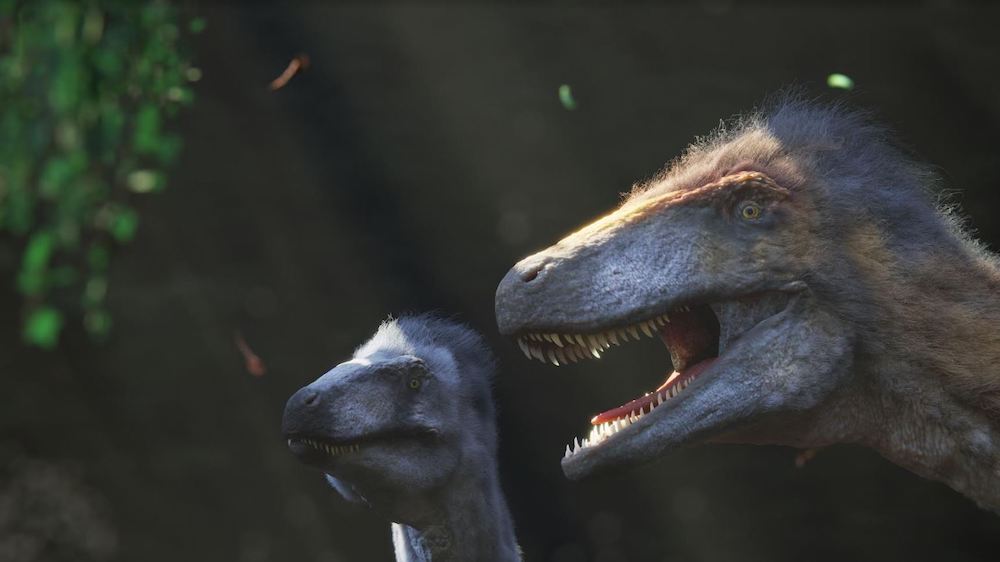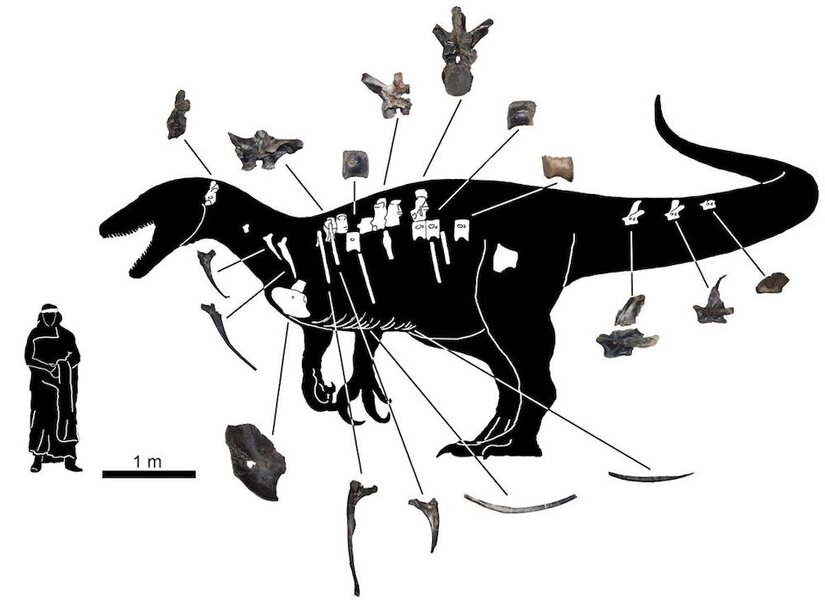Create a free profile to get unlimited access to exclusive videos, sweepstakes, and more!
Newly discovered dinosaur was the Wolverine of theropods
Maip macrothorax could float like a butterfly and slash like a 30-foot bear.

The original Jurassic Park trilogy leaned pretty heavily on T. rex and velociraptor, for good reason. They’re elegant apex predators perfect for the big screen. In the recent and ongoing Jurassic World trilogy, we’ve been introduced to novel dinosaurs including Indominus Rex, bringing new terrors not just to the big screen but to the dinosaur family.
A recently uncovered dinosaur species from modern day Argentina adds a new character to the list of vicious dinosaurs, not through movie magic or genetic engineering, but through scientific discovery.
Mauro Aranciaga Rolando from the Laboratorio de Anatomía Comparada y Evolución de los Vertebrados, and colleagues, recently uncovered a previously unknown megaraptor in the Maastrichtian beds in the Santa Cruz province of Argentina. It represents the largest megaraptorid ever found and likely had impressive, razor-sharp claws for ripping prey to shreds. The team’s findings were published in the journal Scientific Reports.
The area where the new species, dubbed Maip macrothorax, was found sits near the southern tip of Argentina in pre-Antarctic terrain, and dates to approximately 70-million-years ago, right near the end of the Cretaceous. There, paleontologists found between 20% and 30% of M. macrothorax’s fossilized remains.
“In this case, it’s really quality over quantity. We found part of the tail, the neck, the hip, and the thoracic cavity. These bones are very well persevered. We can observe soft parts of the skeleton like the insertion points of muscle and ligaments. That lets us reconstruct many parts of the thoracic cavity,” Rolando told SYFY WIRE.
Researchers used the bones to extrapolate the morphology of the whole animal based on closely related megaraptorid species. Based on the bones they uncovered, M. macrothorax is believed to have been approximately 10 meters in total length, making it the largest known megaraptor.
Megaraptors are well known for their large bodies, relatively small teeth, and truly massive claws at the ends of their arms. While the forelimbs of this particular animal were not found, it’s believed it would have had claws in excess of a foot in length.
“We are investigating close relatives of Maip and these theropods had very long and powerful arms. They were the main tool, the main weapon of these dinosaurs. During prey capture, these animals used their powerful arms to beat and cut prey,” Rolando said.
To get a picture of what it might have been like to be attacked by M. macrothorax, you need only imagine a bear barreling toward you, 30 feet in length, with approximately 14-inch claws swiping at your body. It’s a sight we’re glad to be 70-million-years late for.
M. macrothorax was so large in fact, that some of its bones were mistaken for sauropods by another dig team. After the initial bones were uncovered, Rolando told of another team coming upon a large bone from the same location which they believed to belong to a sauropod. Later, it was revealed to be the tibia of M. macrothorax. They also found some of the foot bones in the same place.
Part of M. macrothorax’s success can be laid at the feet of its bone composition. Analysis of its remains revealed that most of its bones were hollow, not unlike modern birds. While megaraptors didn’t fly, they did benefit from hollow bones, owing to their large body size. Carrying around 30 meters worth of killing machine is a heavy burden if you don’t lighten the load in one way or another.
The team plans to go back to the site in hopes of finding more bones from the specimen, but in the meantime what they’ve already recovered is being studied in Buenos Aires. Of particular interest are the areas where ligaments inserted into the vertebrae and thoracic cavity. Rolando noted this is only the second known specimen of all dinosaurs which preserved those structures, and they hope to use the data to reconstruct and model some of M. macrothorax’s soft tissues.
In Argentina, every province is responsible for the care of the fossils found within their borders. Eventually, the specimen will make its way back to Santa Cruz where it will be preserved and housed in a local museum.
There’s a certain poetic beauty that M. macrothorax is teaching us about the soft tissues of ancient dinosaurs when it made a career of ripping them to shreds 70-million-years ago.



























